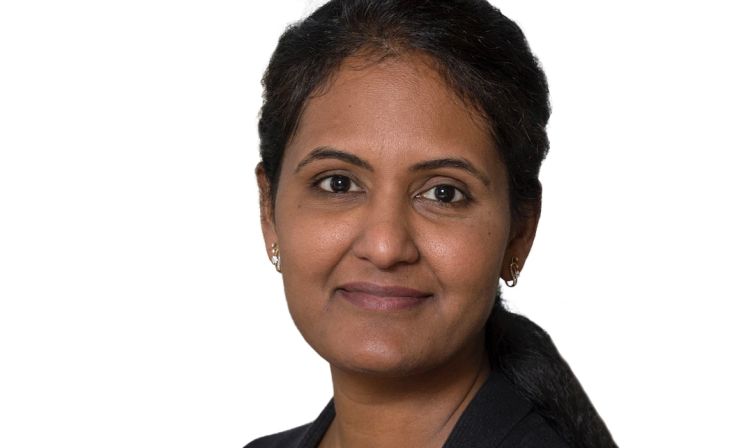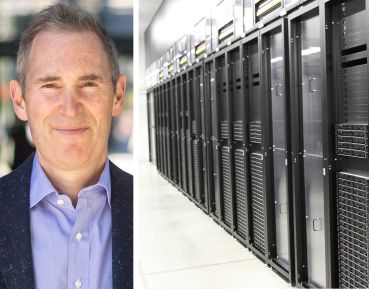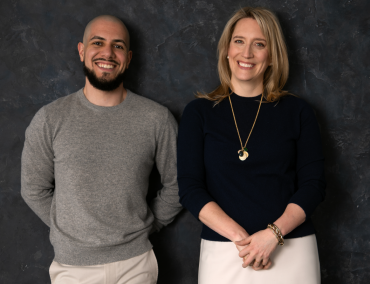Swaroopa Penikelapati On Breaking Down Silos and Fostering Proptech Talent
The technologist arrived in the C-suite via India and the Deep South
By Philip Russo March 7, 2023 9:00 am
reprints
Rising to the role of chief technology officer of a commercial real estate company is difficult enough. Doing it as a woman and also as a person of color — and as an immigrant — is triply so.
Swaroopa Penikelapati, CTO at VTS, the unicorn proptech landlord services company, is the rare professional to encompass each of those personal characteristics, while demonstrating the elite skills to reach the C-suite level.
From her home in the San Francisco Bay Area, Penikelapati took time early Monday morning to talk with PropTech Insider about her journey from India to VTS and the knowledge she collected along the way, which she now shares with others who might benefit from her personal and professional experiences.
The interview has been edited for length and clarity.
PropTech Insider: Please talk a little about your background and how you came to be the CTO at VTS.
Swaroopa Penikelapati: I have worked as a technologist in the health care, fintech and real estate industries. All of my 20 years-plus experience is in software engineering and development. With respect to proptech, I started working on early-stage startups, which gave me exposure to building innovative successful products. It also helped me gain the domain knowledge to understand our customers. I have been passionate about learning the industry and love the real estate industry.
Working at these different proptech companies allowed me to combine that passion and my skills to solve real estate tech challenges. At early-stage startups like My New Place, which eventually was bought by RealPage, and then at Dotloop, which was bought by Zillow, those experiences of working early-stage and also in late-stage public companies gave me the right blend of exposure. Later, I co-founded a real estate software company called PropertyCapsule, which was acquired by VTS in 2019. It gave me exposure to the retail sector on the CRE side. That’s how I joined VTS.
In your transition into proptech, did you find that there was more resistance to the adoption of technology in real estate as compared to fintech?
Compared to other industries, adoption of technology in real estate has a lot of room and space for growth, definitely. In terms of the products that are the innovation needed, I think real estate overall is ready for that innovation, which has already happened in some of these other industries.
Given VTS’ growth in recent years, how do you view and prioritize your day-to-day and longer-term goals with the company?
Overall, as an industry, I think, operationally, teams that are accountable for driving and protecting building revenue — like leasing, asset management, marketing — they’re getting leaner. These teams have historically worked in silos, but now they’re going to start operating as one integrated asset team where everyone has a seat at the table.
Technologically, teams are trying to consolidate their tech stack to give themselves fewer disparate applications to manage, and are investing in platforms that provide a centralized set of tools and source of truth in a workplace — not just in an office floor or a company anymore, but everywhere the tenants are. Following these trends, the products that VTS is investing in look to help across the board.
When you say bring teams closer together, what does that mean exactly? And what specifically is your role in dealing with the data produced at VTS?
The leasing, asset and property management teams have operated pretty much in silos. Through the VTS platform we help the property managers with our products and suite of feature sets that allows us to uniquely collect the different data sets and data points about the tenants, the amenities in the building, and what’s going on in the building overall, which is necessary in terms of providing that data and connecting it back to the leasing teams in order to know what the tenants are interested in — what is resonating, what is not resonating.
Everything is managed on our platform, allowing us to gather the data across the landlord’s entire portfolio and across geographies, providing that information back to the asset managers as well. That integrated platform view is our vision and what we’re working towards.
In regard to data, what specifically are landlords looking for?
They’re looking for amenity utilization and occupancy trends.
Let’s step back and talk a little bit about your personal journey.
I was born in Hyderabad, India, and I came to the U.S. 20 years ago to study here. I studied at the University of Louisiana at Lafayette, and I had a research assistantship at the University of Louisiana.
The industries you have been in don’t employ vast numbers of women, especially at the C-suite level. As a woman, a person of color, and an immigrant who has reached an executive position, how did you find your path to where you are now?
Historically, those industries have been white male-dominated. Throughout my journey, I’ve had great mentors, irrespective of their gender. I learned a lot through them. It’s also your passion and your curiosity to learn that helps you to get deeper in understanding the problems and applying your technology skills to help you to develop, build, and green technology solutions that your customers like.
And, in that journey, as I joined the startups, it gave me more insight into the problems and the ability to go deeper. It gave me the opportunity to get deeper into understanding across the board — not just technology, but understanding how the marketing and sales happens; how the product line really works end to end. It created that passion and interest in learning more and more that essentially led to my growth throughout my career.
Have you been involved in women’s organizations within these industries? How have they affected your growth?
In respect to joining VTS, both the company and I have partnered in being intentional about understanding that there is first a knowledge gap, and that we must acknowledge it, and bridge that gap.
So we started with improvement of the processes itself. We made sure that we have gender decoders, so that for the roles we post any gender can feel qualified to apply. We then put a certain emphasis on how we source the candidates. We focus more on diversity, equity and inclusion, creating a comprehensive plan in terms of increasing our pipeline. The more diverse our pipeline is, the more chances that we’ll get diverse candidates into the company. In the interviewing stage, we’ve introduced values interviewing, where we make sure that the interviewers are trained on unconscious bias. And even at the offer stage, we make sure that the offers that we give out are equitable compared to the rest of the company.
Also, we partner with InHerSight in creating more awareness about VTS as a brand throughout that cycle. Another aspect is focused more on apprentices as well. That’s an area where we can definitely ensure that more diverse candidates are groomed by VTS, enabling us to get more diverse talent. Women in technology overall as a pool is pretty low. Within that pool, VTS has been trying to be intentional about making sure that not just women, but having a diverse culture overall, brings us new perspectives into the company. That enables us to bring unique market solutions to solve the challenges and issues within the industry.
Having been deeply involved in these processes, are you finding that the situation has improved?
I can definitely speak about VTS. We review how we are doing on a quarterly basis, to learn and make sure we know what is working. Gender diversity overall has definitely increased. Last year, we were successful in bringing on almost 35 percent gender-diverse engineering hires. Our goal was to get to 25 percent, so we definitely have done a great job in the last year in that respect.
In retrospect, to what extent did your gender, race and immigrant status add obstacles to your career path?
The challenges are definitely there. In terms of having your voice being heard, that’s been a challenge. I had to definitely put in more effort in making sure that my perspective is not brushed off, but instead is listened to and understood.
If you were to ask me about my background in terms of how I, as a person of color, was able to grow, one thing I would say in terms of sharing with someone who’s going through the same journey, whether it’s a woman or a person of color, is that embracing a growth mindset is very important. Being willing to learn and asking lots of questions is a key thing. Also, following your passion and driving the change. Then, finding companies that really value diversity, equity and inclusion, and doing your research will definitely help in your career.
Also, networking. Don’t be afraid to speak to people who understand the sector and find mentors.
Philip Russo can be reached at prusso@commercialobserver.com.


